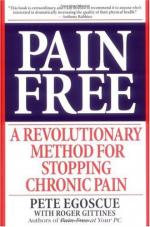|
This section contains 535 words (approx. 2 pages at 300 words per page) |

|
A New Look at Drugs for Treatment of Chronic Pain
Summary: The existence of chronic pain, in both terminal and non-terminal patients, forces doctors and laymen to look at opiods and other traditionally avoided medicines. While this is a controversial position, such treatment should be considered more often due to the advancing age of our population and the horrors of having to live with pain.
A patient approaches a doctor, saying he is in severe pain. The doctor gives a tentative diagnosis, prescribing an OTC pain reliever, prescription NSAID, or mild opiate. But, to the chagrin of all, the pain doesn't go away, or gets worse. Tests are taken; maybe operations are performed; yet, the pain remains, often going worse with time.
It used to be traditional for the doctor to give up; the patient must "grin and bear it." If the patient still cannot find relief,he may try this for awhile; the pain may indeed go away. Or it may not.
Precisely when should the stronger opiates, for long to indefinite periods of time, be considered?
When the patient requests it"
This is a controversial position.
Won't the patient get addicted"
Not necessarily. Several studies have shown that, especially when kept on a regular dose of narcotics, the patient will develop...
|
This section contains 535 words (approx. 2 pages at 300 words per page) |

|


